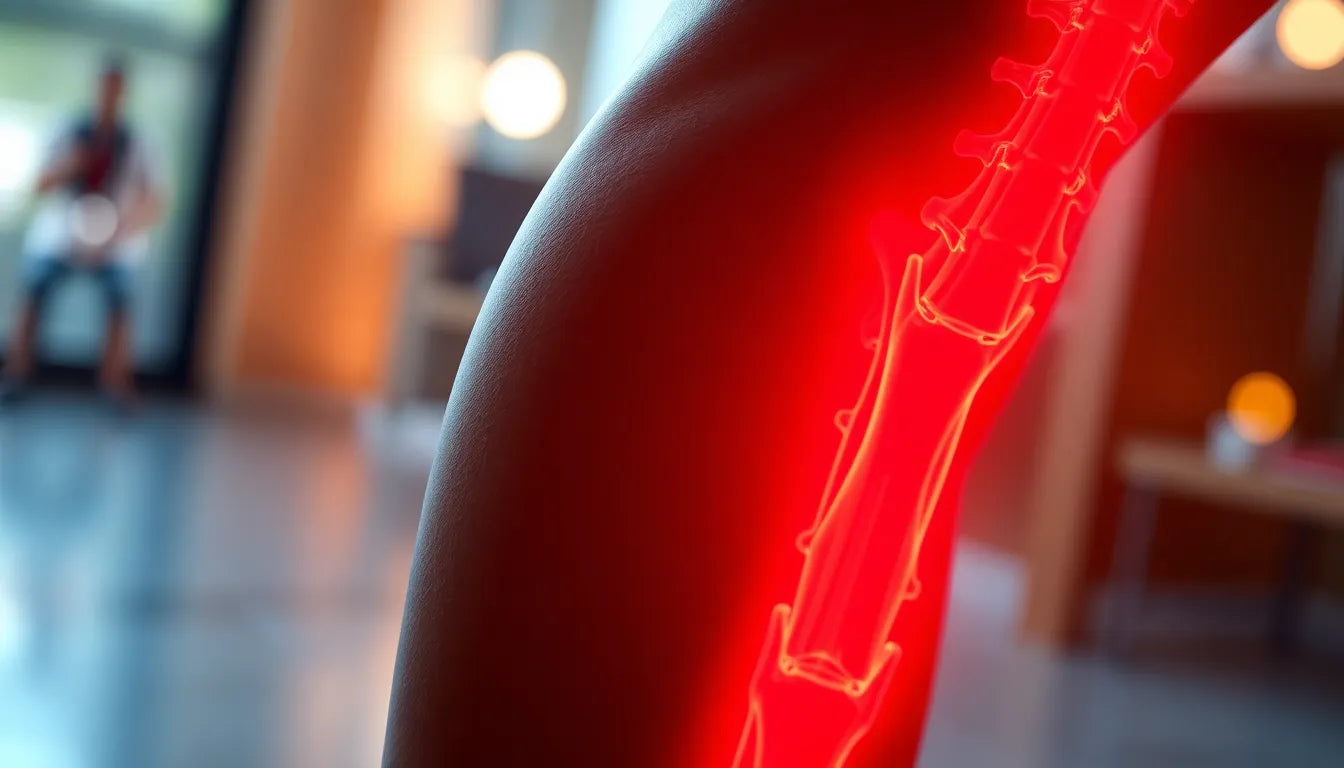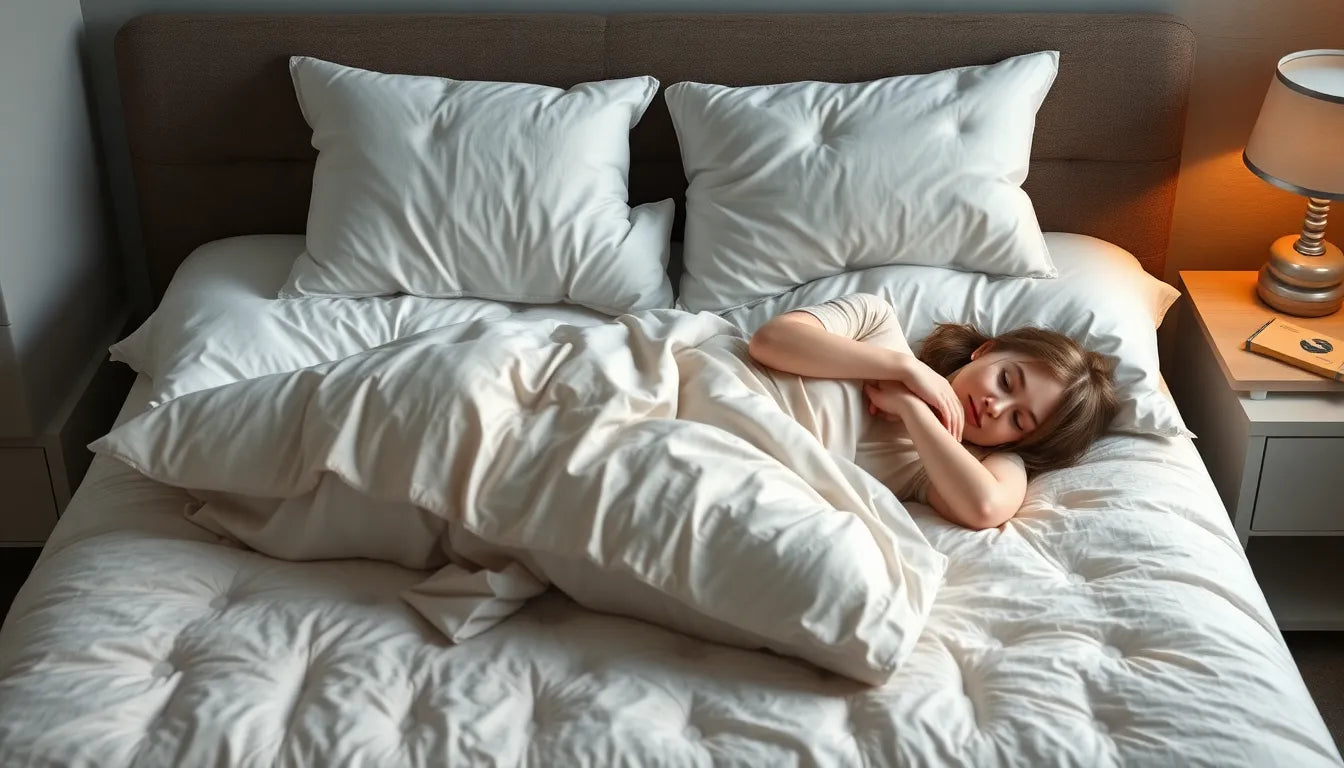Living with an L5 herniated disc can be a challenging experience, especially when it comes to finding a comfortable sleeping position. For many individuals, the pain and discomfort associated with this condition can significantly disrupt sleep, leading to a cycle of fatigue and heightened discomfort. Understanding how to sleep with a herniated disc L5 is crucial for improving not only sleep quality but overall well-being.
Sleep plays a vital role in the healing process and pain management for those dealing with spinal issues. A restful night's sleep can aid in reducing inflammation, promoting tissue repair, and enhancing mood and cognitive function. However, for individuals with an L5 herniated disc, achieving this restful state can often feel like an elusive goal.
the challenge of sleeping with an L5 herniated disc
Have you ever tossed and turned all night, unable to find a comfortable position due to back pain? If so, you're not alone. Many people with an L5 herniated disc face this nightly struggle. The pain and discomfort can make it difficult to find a position that doesn't exacerbate the symptoms, leading to a restless night and a challenging day ahead.
The L5 vertebra is located in the lower back, an area that bears much of the body's weight and is involved in many common movements. When a herniated disc occurs at this level, it can cause significant pain and discomfort, often radiating down the legs and affecting daily activities. This discomfort doesn't disappear at night, making it difficult to find a position that provides relief and allows for restorative sleep.
importance of sleep in managing herniated disc pain
Quality sleep is essential for anyone dealing with chronic pain, including those with an L5 herniated disc. During sleep, the body undergoes critical processes that help reduce inflammation and facilitate healing. A lack of restful sleep can exacerbate pain levels and slow the healing process, creating a vicious cycle that can be difficult to break.
For individuals with spinal issues, finding the right sleeping position and using supportive devices can make a significant difference. Not only does this help in managing pain levels, but it also contributes to a better quality of life by ensuring that the body gets the rest it needs to heal and function optimally.
In the following sections, we'll explore some of the most effective sleeping positions and supportive devices that can help alleviate the discomfort of an L5 herniated disc, allowing you to enjoy a more restful and restorative sleep.
optimal sleeping positions for herniated disc relief
Finding the right sleeping position can be transformative for individuals dealing with an L5 herniated disc. The way you position your body during sleep not only affects your comfort but also plays a critical role in reducing disc pressure and promoting spinal alignment. Let's explore some of the most recommended sleeping positions that can help alleviate discomfort and improve sleep quality.
back sleeping for spinal alignment
One of the most universally recommended positions for those with an L5 herniated disc is sleeping on your back. This position helps maintain the spine's natural curve and minimizes pressure on the disc. To enhance comfort and support, place a pillow under your knees. This simple adjustment can significantly reduce stress on the lower back by promoting a more neutral spine alignment.
For additional support, consider using a wedge-shaped pillow. This type of pillow elevates the legs slightly, further reducing tension in the lower back and promoting a restful night's sleep.
side sleeping with knee support
Sleeping on your side is another effective position for managing herniated disc pain. To ensure proper alignment, place a pillow between your knees. This technique helps align the hips and spine, reducing stress on the lumbar region. For added comfort, you might also place a rolled-up towel between your waist and the mattress. This extra support can help maintain a straight spine and prevent twisting during the night.
embracing the fetal position
The fetal position, where you curl up on your side with your knees pulled towards your chest, can also provide relief. This position opens up space between the vertebrae, which can ease nerve pressure and reduce pain. It's a particularly beneficial position for those who experience nerve-related symptoms due to their herniated disc.
caution with stomach sleeping
While stomach sleeping is generally discouraged due to its tendency to misalign the spine, some individuals find it unavoidable. If you must sleep on your stomach, place a pillow beneath your hips or stomach to help maintain spinal alignment. This adjustment can mitigate some of the adverse effects associated with this position.
supportive devices for enhanced comfort
In addition to finding the right sleeping position, using supportive devices can further enhance comfort and alleviate pain. The right pillow can make a significant difference in maintaining proper alignment and reducing pressure on the spine.
choosing the right pillow
Selecting a pillow with the appropriate thickness is crucial. Whether you're supporting your head or placing it between your knees, the pillow should provide adequate support without elevating or lowering the body too much. For back sleepers, a thinner pillow under the head is ideal, while side sleepers might benefit from a thicker one to fill the space between the neck and shoulder.
utilizing rolled towels and wedge pillows
Rolled towels and wedge pillows are versatile tools that can help maintain spinal alignment. A rolled towel placed under the lower back can provide additional lumbar support, while a wedge pillow can elevate the legs, reducing pressure on the lower back. These devices are simple yet effective ways to enhance comfort and promote a better night's sleep.
By experimenting with different sleeping positions and incorporating supportive devices, individuals with an L5 herniated disc can find a combination that works best for them. The key is to prioritize spinal alignment and comfort, allowing for a restful and restorative sleep that contributes to overall well-being.
additional tips for managing L5 herniated disc pain
In addition to finding the right sleeping position and utilizing supportive devices, there are further strategies to enhance comfort and manage pain associated with an L5 herniated disc. Implementing these tips can help create a more conducive environment for restful sleep and overall pain relief.
establishing a pre-sleep routine
Incorporating a pre-sleep routine that includes gentle stretches or relaxation exercises can significantly ease muscle tension and prepare the body for sleep. Simple activities such as yoga stretches, deep breathing exercises, or meditation can relax the muscles around the spine, reducing discomfort and promoting better sleep quality.
choosing the right mattress and maintaining a comfortable environment
The choice of mattress plays a crucial role in managing herniated disc pain. A medium-firm mattress is often recommended as it provides adequate support to maintain spinal alignment while still offering comfort. Additionally, ensuring a comfortable sleep environment by controlling room temperature and minimizing noise can further enhance sleep quality.
conclusion
Managing sleep with an L5 herniated disc involves a combination of finding the right sleeping positions, using supportive devices, and adopting lifestyle changes that promote relaxation and comfort. By experimenting with these strategies, individuals can discover what works best for them, ultimately leading to improved sleep quality and enhanced overall well-being. Remember, the key is to prioritize spinal alignment and comfort to achieve a restful and restorative sleep.
frequently asked questions
how can I tell if my mattress is contributing to my back pain?
Signs that your mattress may be contributing to back pain include waking up with stiffness or discomfort, feeling like you're sinking too deeply into the mattress, or noticing increased pain in the morning. If these symptoms persist, it may be time to consider a mattress that offers better support and alignment.
are there any specific exercises I should do before bed?
Engaging in gentle yoga stretches or pelvic tilts before bed can help relax the muscles and prepare the body for sleep. These exercises promote flexibility and reduce muscle tension, which can alleviate pain and improve sleep quality.
can sleeping positions alone alleviate my herniated disc pain?
While optimal sleeping positions can significantly help reduce pain, a comprehensive approach is often necessary. This may include physical therapy, proper ergonomics during daily activities, and possibly medical intervention to effectively manage herniated disc pain.
should I consult a doctor if my sleep doesn't improve?
Yes, if you experience persistent pain or sleep disturbances despite trying different strategies, it is important to consult a healthcare professional. They can provide a thorough evaluation and recommend further treatment options to address your specific needs.
Sources
- NY Bone & Joint Specialists. "Sleeping with a Herniated Disc."
- YouTube: "Best Way to Sit or Sleep With an L4 L5 or L5 S1 Disc Bulge."
- Pain & Spine Institute. "Best Sleeping Positions for Herniated Disc."
- Florida Surgery Consultants. "Sleeping Positions for Herniated Disc."
- Dr. Kevin Pauza. "Herniated Disc Treatment."
- NY Spine Institute. "Sleeping Tips for Herniated Discs."


















